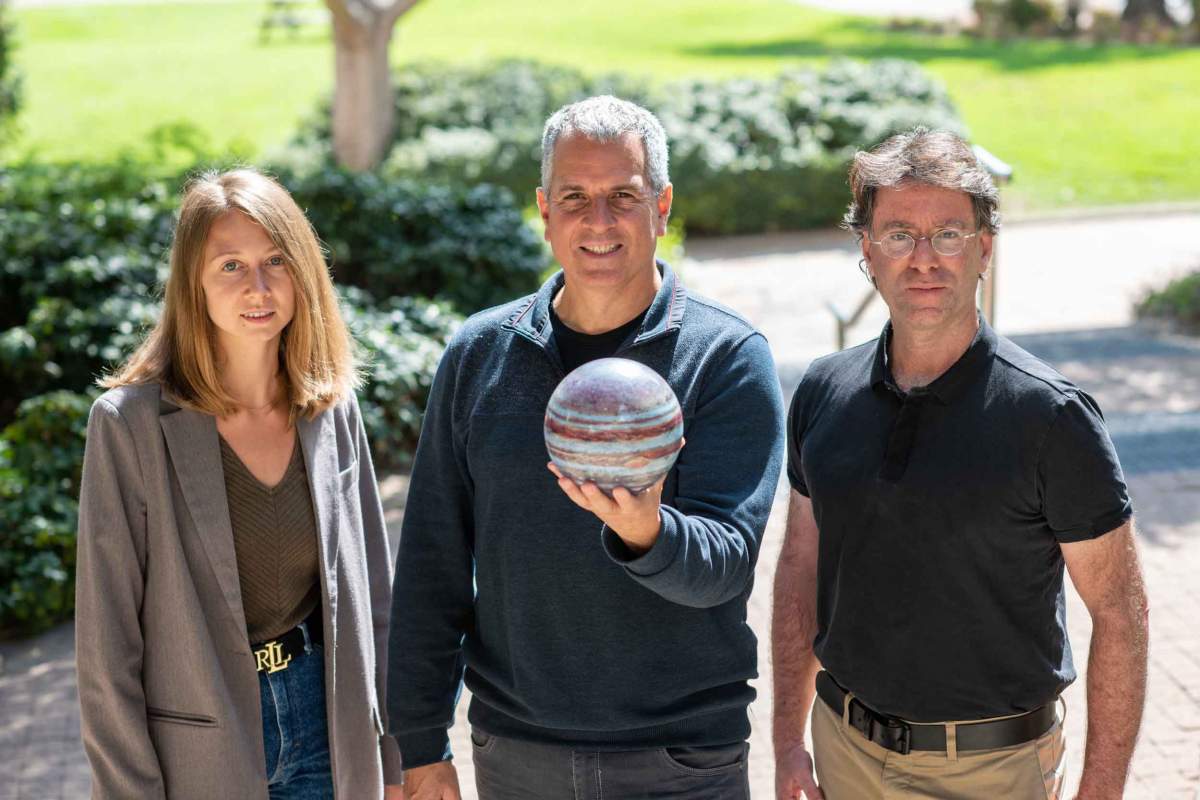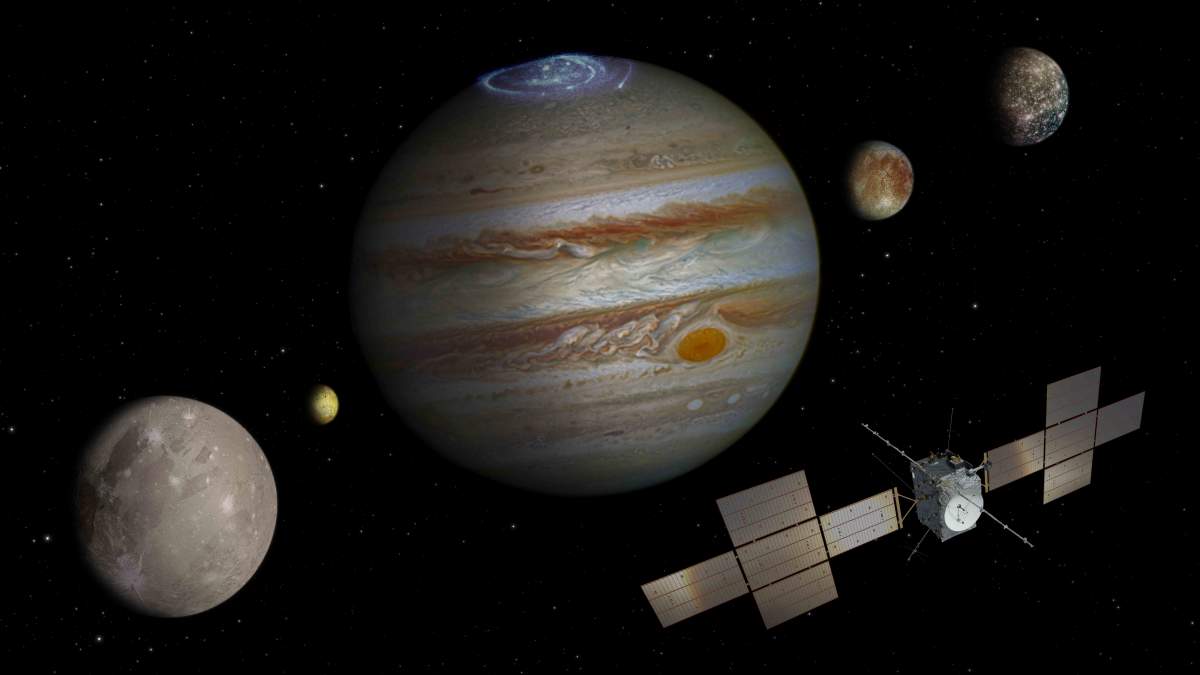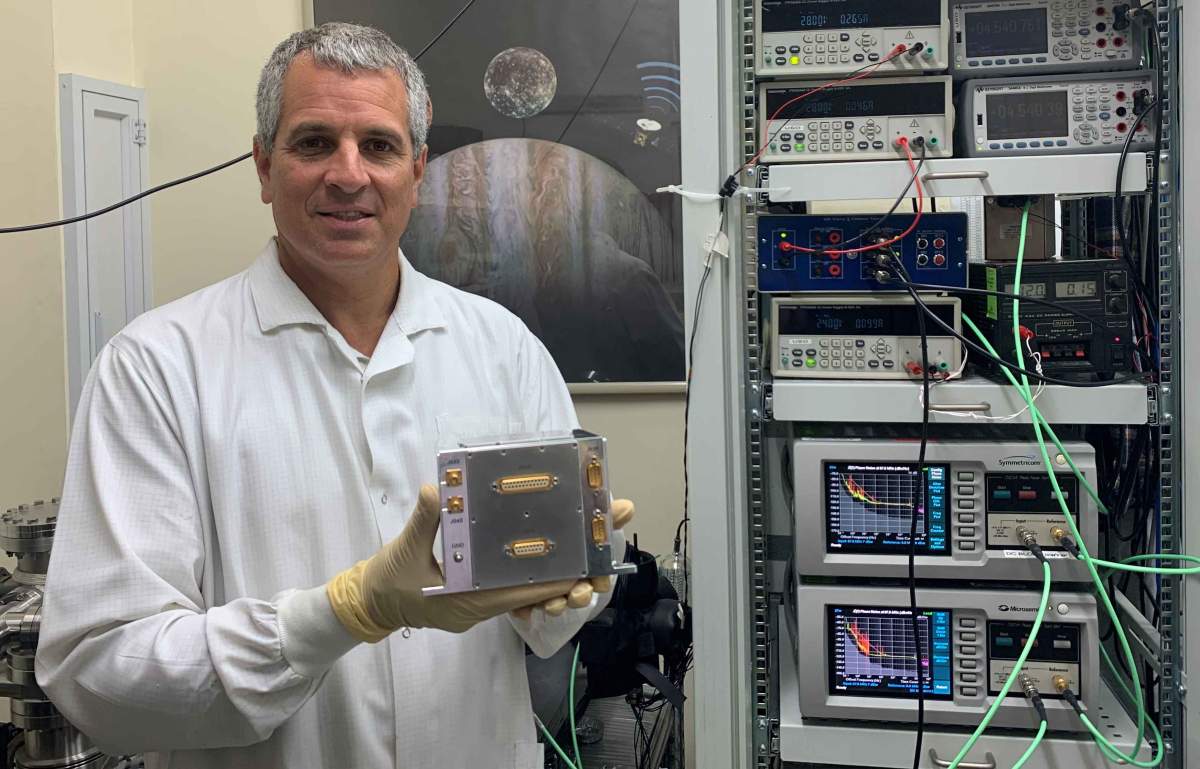Are you a journalist? Please sign up here for our press releases
Subscribe to our monthly newsletter:
The journey to Jupiter has begun. The European Space Agency’s unmanned spacecraft JUICE (short for JUpiter ICy moons Explorer) was recently launched from Europe’s Spaceport in French Guiana. JUICE’s voyage, the ESA’s most ambitious mission to date, will be particularly lengthy: Upon reaching Jupiter’s orbit by 2031, it will embark on a four-year mission to investigate three of Jupiter’s moons – Callisto, Europa and Ganymede – as well as the composition of Jupiter’s atmosphere.

An in-depth exploration of the planet’s atmosphere will be made possible by the contribution of Prof. Yohai Kaspi and Dr. Eli Galanti, both of the Weizmann Institute of Science’s Earth and Planetary Sciences Department and members of JUICE’s Science Team. They are in charge of one of the mission’s key experiments and will use their own Ultra Stable Oscillator, a device that will allow them to probe Jupiter’s atmosphere. Not only was the device – the most precise instrument of its kind in the world – customized by Israeli scientists, it was manufactured by the Israeli company AccuBeat; in addition, the endeavor was funded by the Israel Space Agency. All this makes it a landmark achievement: the first time an entirely Israeli invention will leave Earth’s vicinity.
“This is not our first involvement in international space missions, but the fact that this is a completely Israeli creation makes it very special for us,” Kaspi says. The Weizmann team began working on the project back in 2013, when the ESA announced the mission. “When I first approached the Israel Space Agency with the idea of building the oscillator, this seemed an impossible task, but the commitment of the agency and the synergy of industry and academia made this happen,” he adds.
"When I first approached the Israel Space Agency with the idea of building the oscillator, this seemed an impossible task, but the commitment of the agency and the synergy of industry and academia made this happen"
Says Uri Oron, director of the Israel Space Agency at the Ministry of Innovation, Science and Technology: “The Israel Space Agency is proud to be taking part in the European Space Agency's flagship mission, both in terms of its engineering and technology, and in terms of its research. Without doubt, the research to be conducted at the Weizmann Institute will constitute a key component in the mission's research program, and will continue to advance space research in Israel and position it among the global leaders in the field.”
Traveling to Jupiter – which is about 800 million kilometers away – is not an easy feat, by any means. On its way to the giant gas planet, JUICE will perform a flyby of Venus and three flybys of Earth before gaining enough momentum – in what’s known as the slingshot effect – to make its way to Jupiter. The spacecraft’s estimated time of arrival in July 2031 will mark the beginning of its four-year expedition. “My hair will be completely grey by the time JUICE reaches Jupiter,” says Kaspi. Because of the long journey ahead, the aptly-named Ultra Stable Oscillator had to be extraordinarily stable, designed to survive crossing the vast distances of the cosmos. “It’s a unique achievement,” says Galanti. “The oscillator was constructed to be extremely durable, yet it’s incredibly light – it weighs only two kilograms. It was a technological challenge and AccuBeat really pulled it off.”
Says Benny Levy, CEO of AccuBeat: “AccuBeat's vast experience and knowledge helped the development of technology with unprecedented capabilities. We are proud and excited to be part of a historic research project, the results of which can very well lead to sensational discoveries in the world of science, space and humanity as a whole.”

Furthermore, the Weizmann scientists will be participating, as part of their role in JUICE’s Science Team, in the icy moon part of JUICE’s agenda, where they will contribute their expertise in oceanic and atmospheric turbulence to, hopefully, provide insights into the oceans of Callisto, Europa and Ganymede. These three moons, which are completely covered in ice, could possibly represent the biggest repository of H2O in the Solar System. While their surface is entirely frozen, previous magnetic field measurements showed that beneath lie vast, liquid oceans. The team hopes to find out how deep these oceans are, and whether the presence of water on Jupiter’s moons spells the existence of conditions for life as we understand it.

Prof. Yohai Kaspi’s research is supported by the Helen Kimmel Center for Planetary Science and by Susanne and René Braginsky.